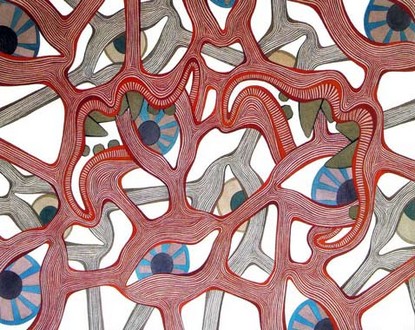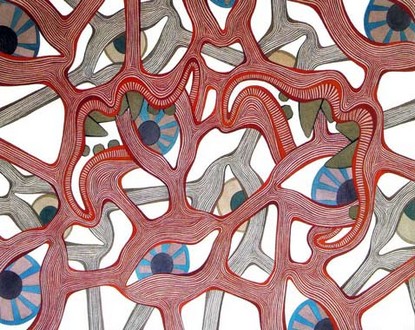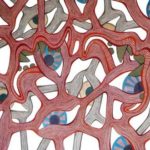Georgik Braunschweig is a Swiss artist born in 1957 in La Chaux-de-Fonds. He completed his studies in Paris in 1974, then spent a year in the United States. It was in 1989 that he exhibited for the first time in France at the Pompidou Center.
This summer, he could be admired at the Chave Gallery in Vence.

His work explores the deformations of bodies in their multiple possibilities. Faces overlap and gaze at each other, characters stick out their tongues, a skeleton dances a saraband. Are these grimacing masks in hell?
The artist is both an anatomist and a psychoanalyst. He pushes the questioning to its limits and hints at a certain anxiety. These deformed, gelatinous silhouettes will remind us of some of Munch’s paintings.
Then Georgik takes us into another black-and-white universe, where we might see a certain Manichaeism in his family linen, with this alternation between what would be good and what would be evil.
An undulating line, a heartbeat, in a word, life. A factory grinding individualities with this ink stamped on paper from 1985 shows the condemnation of this society caught in an endless race for consumption. Man loses his identity, his existence.
“Oh, I just had an idea,” he tells us at the beginning of this catalog, and we flip through this work, discovering this artist page by page in this splendid and luxurious brochure published by the Chave Gallery in Vence. “What I see, What I think, What I know.” At the end of the work, it’s a key to better understand Georgik. The artist thus shares his life experiences with us.
I see therefore I think, therefore I know, one could say to parody Descartes. Georgik uses lines and undulations, his work is in perpetual motion, and we have the impression that his paintings will move before us, for they are alive.
Thierry Jan



